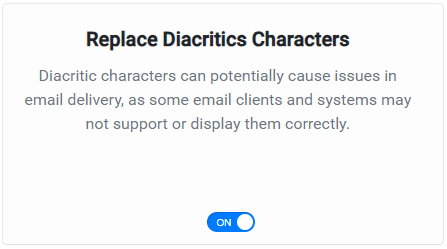The Importantence of Diacritics Characters Replacement
 Diacritics characters are letters with accent marks, such as
Diacritics characters are letters with accent marks, such as á, é, ñ, and ü. While they are commonly used in many languages, including Spanish, French, and German, they can pose a challenge for email delivery. Some email clients and spam filters may not recognize or display diacritics characters properly, leading to rendering issues or even email rejection.
To ensure compatibility across email clients and avoid spam filters, many email marketers choose to replace diacritics characters with their plain ASCII equivalent. For example, á becomes a, é becomes e, and so on. This process is known as diacritics characters replacement.
By performing diacritics characters replacement in email content, marketers can improve the deliverability and readability of their emails. This technique ensures that the text displays correctly on a wide range of email clients and devices, including those that do not support or recognize diacritics characters.
In addition to improving email deliverability and compatibility, diacritics characters replacement can also improve the overall user experience for subscribers. By ensuring that the text is readable and accessible, email marketers can better engage their subscribers and increase the effectiveness of their email marketing campaigns.
Video Overview of Diacritics Characters Replacement
Diacritics Characters Replacement Use Case
A travel company wants to send out an email promoting a vacation package to a english-speaking audience. The email content includes several diacritics characters because the destination is located in spain and the description contained chracters such as ñ and á, which are commonly used in the Spanish language. However, the company is concerned that these characters may not display properly on certain email clients or devices, leading to a poor user experience and potentially impacting the effectiveness of the campaign.To address this issue and ensure that the email is compatible with a wider range of email clients and devices, the travel company decides to use a campaign cleaner that automatically removes any non-ASCII characters, such as diacritics. This technique ensures that the email content is universally compatible and reduces the risk of rendering issues or email rejection.By using a campaign cleaner to remove non-ASCII characters from their email content, the travel company can improve the deliverability and readability of their email campaign, while ensuring that their message reaches the widest possible audience.

